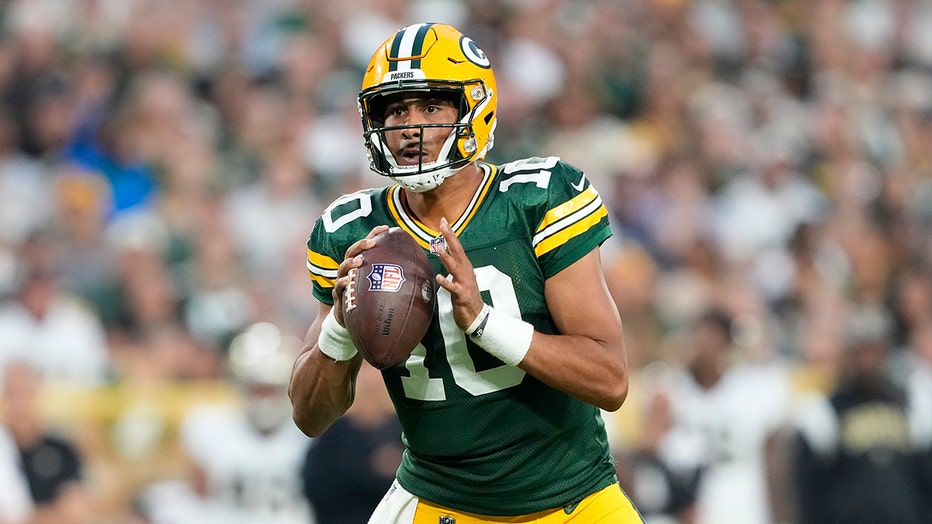
Historic Rivals, Opposite Approaches: Bears and Packers’ Offenses Shaped by Their QBs
Founding franchises and bitter rivals, the Bears and Packers couldn’t be more different, especially in their offensive team-building strategies. One team flaunts a wealth of high-priced talent, while the other boasts equally skilled players at a bargain.

The secret? Their trust in their quarterbacks.
Before the 2023 season, the Packers publicly expressed confidence in quarterback Jordan Love, despite his limited experience. They didn’t sign any big-name veterans or draft a wide receiver until the second round. Their top players were all in their second year.
Despite the cautious approach, the Packers’ gamble on Love paid off. Head coach Matt LaFleur’s playcalling evolved as Love adjusted to the NFL’s pace, initially focusing on quick passes and simple reads. Green Bay’s strategy included heavy use of motion, keeping defenses guessing about the top receiver.
The result? Love threw touchdown passes to ten different players, five of whom scored multiple times. Reed and Doubs led the team in touchdowns, while tight end Musgrave and others also contributed significantly. This unpredictable offense kept defenses on their toes, not knowing which receiver to target.
Love’s receivers had the third-best wide-open percentage, according to Next Gen Stats, thanks to their ability to consistently find space. This system required immense trust in Love to keep everything running smoothly.
In contrast, the Bears’ approach highlights the stark differences between these legendary rivals.
“As the season progressed, Love’s confidence soared. Green Bay’s playbook expanded, and Love’s field vision and decision-making improved significantly. He proved he was worthy of the Packers’ trust. Their decision to spend minimally on offensive weapons could have backfired, but it didn’t.
In a surprising move, Green Bay recently invested heavily in running back Josh Jacobs, signing him for $48 million over four years, making him the highest-paid skill player on the team. This investment sets the Packers up for another successful season without needing a rebuild.
Contrast this with the Bears. After trading out of the first overall pick in 2023, they insisted on acquiring wide receiver D.J. Moore, who instantly boosted the offense. Despite Moore’s impressive performance, the Bears struggled, with Justin Fields posting poor success and completion rates.
Determined to avoid a repeat, the Bears drafted highly-touted quarterback prospect Caleb Williams and surrounded him with top talent. They acquired wide receiver Keenan Allen, tight end Gerald Everett, and running back D’Andre Swift, creating a robust offensive lineup at a premium cost. The Bears are shielding Williams from failure by providing him with ample support, unlike the Packers’ trust-based approach with Love.
While the Packers thrived with minimal investments, this season will reveal if the Bears’ high-spending strategy to support their rookie quarterback will pay off. Will Chicago’s investment-heavy approach prove successful, or will Green Bay’s trust-based strategy continue to dominate?”
Leave a Reply